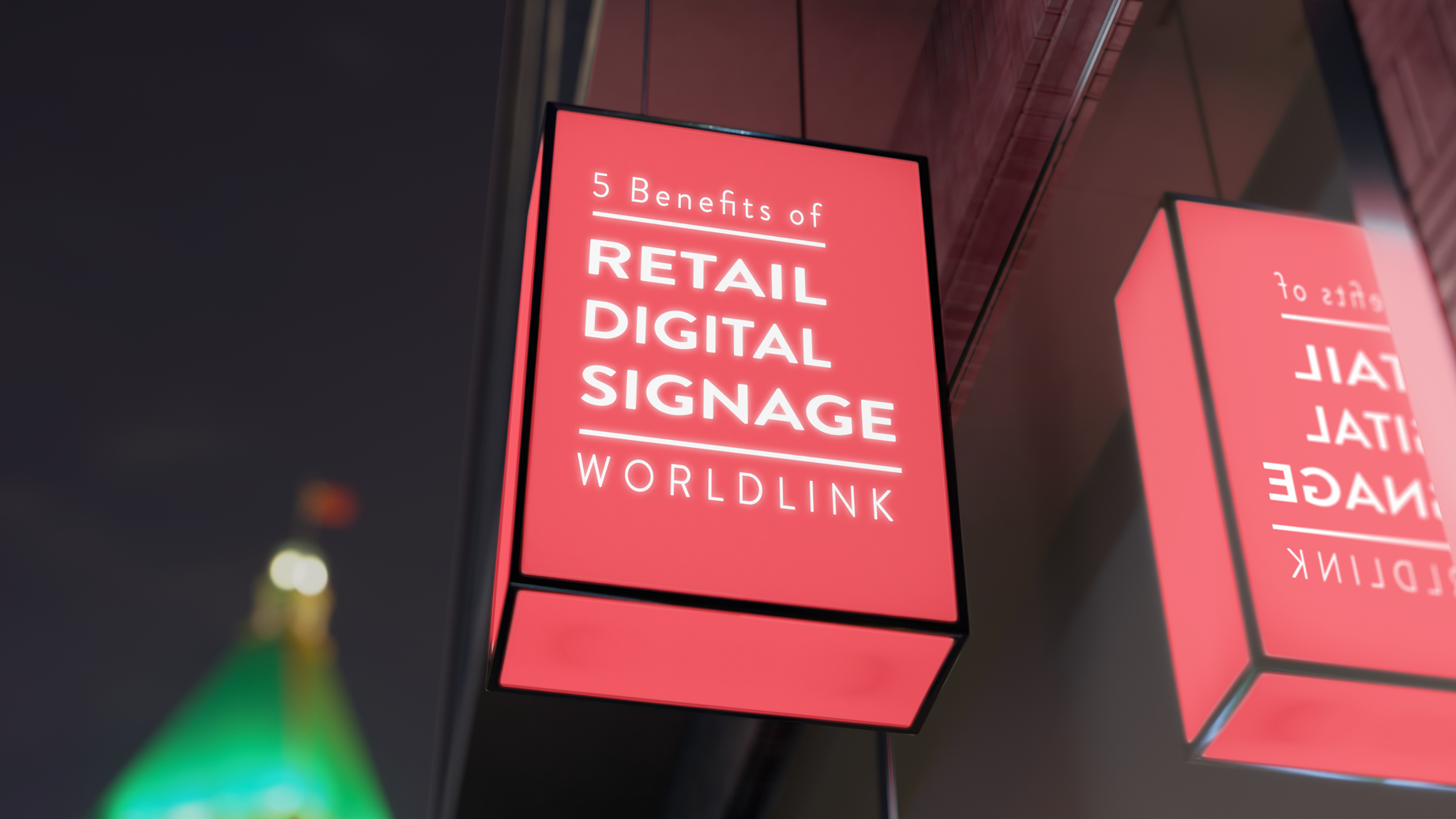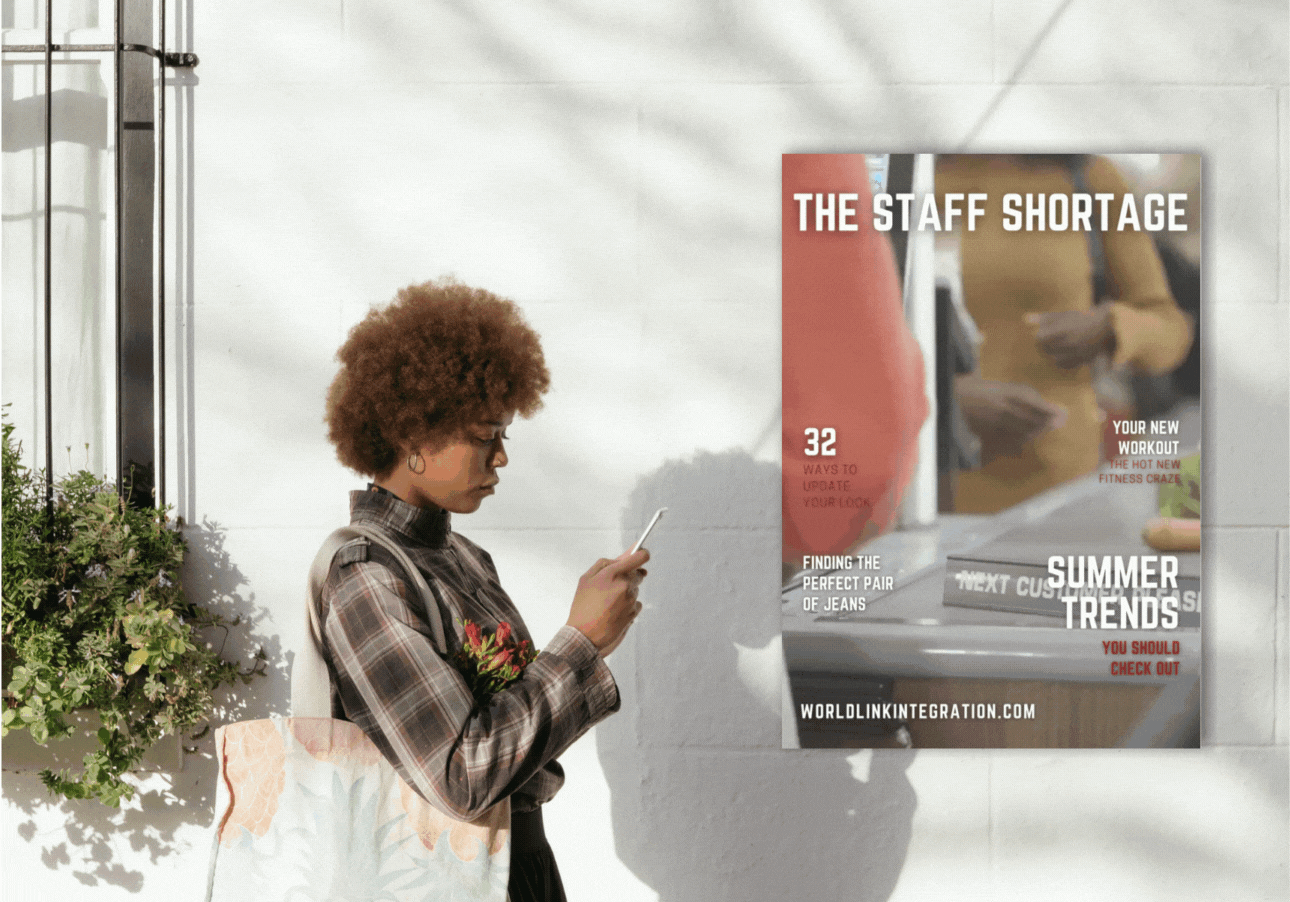The pandemic can go by many names: COVID-19, the coronavirus, corona, or 2019-nCoV. You could also call it the Age of Disruption. In 2020, millions of businesses temporarily closed their doors and strategized new ways to reach consumers. Restaurants implemented new systems for takeout-only (as retail and grocery increasingly did with BOPIS), while eCommerce statistics shot to the sky. Yet, a year later, in 2021, businesses are still in a frenzy to meet consumer needs.
It’s easy for retailers to feel lost in the multitude of advertising channels. Social media ads, display retargeting, influencer marketing, and of course, don’t forget traditional advertising methods. However, retail digital signage bridges the gap among advertising channels, ultimately achieving omnichannel digital marketing, a key component in modern marketing strategies.
“New Retail”
Since the pandemic, Amazon quadrupled its profits, with CEO Jeff Bezos reaching a net worth of $203 billion. However, it’s not the only eCommerce company that rose to success with the ironic aid of a deadly virus. During the SARS outbreak in 2002, the Chinese technology company Alibaba that also specialized in eCommerce was in its mere infancy. They reacted to the SARS outbreak by adopting a frictionless shopping experience involving the integration of online and offline digital marketing. Moreover, they coined this experience with the phrase, “new retail.”
This cohesive customer experience embodies the nature of omnichannel digital marketing. The omnichannel experience consists of delivering uniform messaging across various platforms that equally engage customers to make a purchase.
As stores continue to open their doors to the public, brands must unify their messaging across platforms. One of the best ways to unify a brand’s story across online and offline channels is by implementing retail digital signage. By linking the digital with traditional, retailers can better engage customers and utilize the benefits of omnichannel marketing.
Omnichannel and Digital Signage: Why it Works
We can define retail digital signage as the use of electronic displays or screens (such as LCD, LED, plasma, or projection) to deliver entertainment, information, or advertisement in public or private paces outside of the home.
When consumers enter stores and shopping malls, retailers’ efforts to effectively consolidate digital messaging becomes limited. Unless shoppers use a computer or spend time on a smartphone, most digital messaging will not reach them. Smart beacons in retail can send notifications to users of promotions and sales. Although for it to work, they must opt-in to receive notifications through an app. Retail digital signage, therefore, serves as one of the top benefits of omnichannel digital marketing.
Compared to their plans before COVID-19, 46% of retail executives said they planned to increase their investment in omnichannel retailing moving forward. “The timeless truths of retail are that consumers will always want better prices, selection, and convenience,” McKinsey & Company analysts state. “With the internet having already driven major progress on the first two customer needs, attention is now turning to convenience.”
The benefits of omnichannel marketing efficiently drive sales, as proven by Amazon, Alibaba, and more. Shoppers want simplicity in shopping now more than ever. The omnichannel experience changes with consumer behavior. Therefore, the best way to bridge the online with the offline is by using digital displays. Here are five benefits of omnichannel marketing using retail digital signage.
5 Benefits of Retail Digital Signage
-
Displays cut employee costs, alleviate the labor shortage, and provide more social distancing
Although we know vaccines can lessen the impact of COVID, we still don’t know much about transmission. Hence much of the world remains dedicated to staying socially distant. With fewer employees working in the store, the risk of transmission is mitigated.
However, shoppers still require sources other than the internet to answer their questions accurately. Digital signage not only acts as an informant but also as a pandemic-proof personal shopper. Currently, this technology acts as a blessing among times of severe labor shortages. Changing popular trends constrict new workers entering the workforce, leaving a diminished pool of labor.
For example, the luxury department store Nordstrom carries kiosks in their denim section. These kiosks ask consumers their fabric preference and lifestyle needs giving them the perfect prescription for jeans. With 360-degree imagery tech, customers can get a three-dimensional perspective of how pants would look before even trying them on.
Additionally, employers can lower their costs. Some employers have the option to cut expenses altogether and rely on retail digital signage to engage consumers. Other retailers can choose to transfer those funds to different departments, such as additional advertising costs or logistics.
-
Displays can lower wait times
A speedy checkout serves as a must in an increasingly digital era. The more consumers embrace the rapidity of eCommerce, the likelier they anticipate an equally swift checkout when shopping. As a result, retailers can expect shoppers to reveal a low patience threshold. Businesses with long lines can thus risk negative shopping experiences.
As the economy pursues reopening, long lines will eventually be inevitable. Yet stores can provide consumers with the option to purchase products using kiosks. Another one of the many benefits of digital signage is that it is often combined with kiosk technology. Instead of standing in line where shoppers must wait on employees, they can use kiosks to their disposal.
Furthermore, if stores choose not to go with kiosks, waiting shoppers have animated displays all around them. This can help take their mind off the long wait while also informing them of future sales, the company’s mission, and more.
-
Displays can be interactive
Retail digital signage excels when it allows consumers to take a deep dive into a business’s product or service. In addition to Nordstrom’s jean example, Tesla lets shoppers build custom electronic cars and walks them through the journey of how Tesla makes its vehicles. Shoppers can change anything from the color of the vehicle to the rims on the wheels.
Ultimately, interactive displays have a better chance at sparking interest and engaging consumers. By engaging them, businesses increase the likelihood of those shoppers becoming loyal customers.
-
Displays can be on a carousel and change automatically
Before retail digital signage, stores typically received seasonal displays that changed every couple of months or so. Staff would take the old ones down, put the new ones up, rearrange whatever was necessary and start the process again. The cycle consumes staff schedules and affects the store’s overall appearance defeating the point of any signage design.
Yet, with retail digital signage, displays can change at a moment’s notice. Whether it’s carousel images or video, staff don’t have to waste their time taking down flyers or posters. By using rule-based software, retailers can program displays to feature deals during certain times. Whether it’s daily, weekly, monthly, or a certain hour of the day, rule-based software allows these deals to show at particular times without much intervention after initial installation.
Lastly, if designers happen to make a mistake or need to pull a design for whatever reason, it’s immediate and cost-efficient. Management can save the company time, money and possibly even lessen the risk of making unsatisfactory headlines.
-
Displays increase foot traffic and make lasting impressions
One of the top benefits of digital signage consists of its luminance. The brighter the sign, the likelier a passerby will see it. In addition to illumination, digital displays also can engage the eyes with movement. Posters, flyers, and other traditional marketing paraphernalia fail to seize consumers’ attention as effectively as digital signage. Intel, for example, reported that digital displays capture about 400% more views than traditional displays.
Plus, engagement is the new normal among younger generations. Also known as the digital native generation, Gen Zs demand instant gratification from their digital experiences. 68% of consumers stated retail digital signage would impact their decision to make a purchase next time they shop.
A Brighter Future
Retailers shouldn’t have to feel lost in the plethora of different marketing channels. Instead of implementing a unique strategy per advertising platform, they should connect the online with the offline to provide customers with a unified message using retail digital signage. Stores can thus create the omnichannel experience by bridging successful online campaigns that worked well during the height of the pandemic with in-store displays.
The future of your store looks brighter with digital signage. If your business would like to take its tech to the omnichannel level, we can help. Worldlink Integration Group can provide you with dynamic displays that showcase your brand. Let’s get your store back on track to meeting company goals with an updated store infrastructure using digital signage.
Contact us to learn more, or give us a call at (949) 861-2830.



